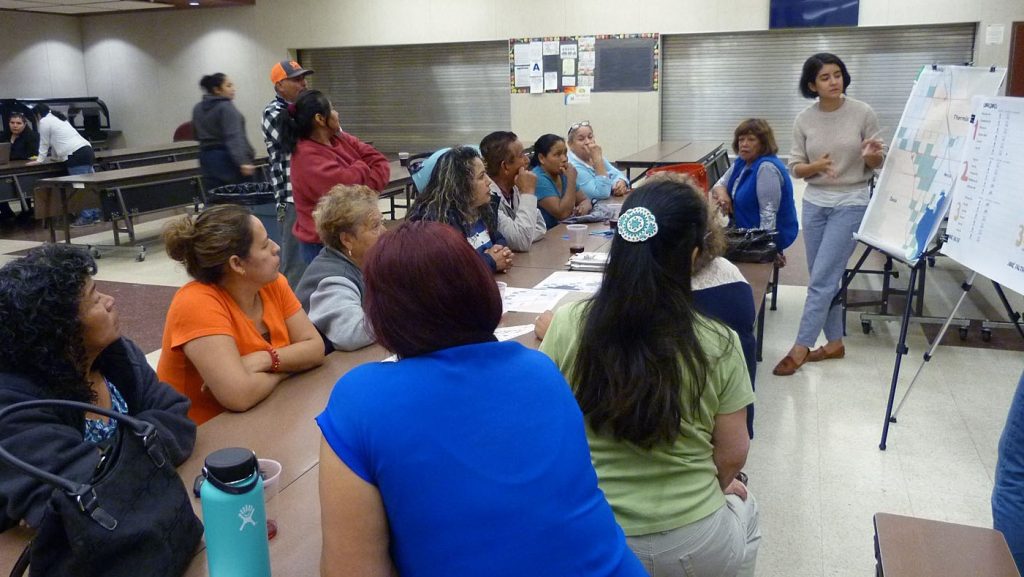Technical Assistance Toolkit Technical Assistance Profile: Active Transportation Resource Center’s Technical Assistance for Disadvantaged Communities Program

Goals
The Active Transportation Program (ATP) is a highly competitive grant program that funds infrastructure projects as well as planning, education, encouragement, and enforcement activities to increase the use of active modes of transportation, such as biking and walking. In order to support the development of successful active transportation projects, Caltrans funds the Active Transportation Resource Center (ATRC), which provides active transportation training, tools, and technical assistance. Additionally, recognizing that disadvantaged communities often face capacity barriers to applying for the program, Caltrans partnered with the California Strategic Growth Council (SGC) to pilot a TA approach in which non-profit TA providers provided intensive application assistance to five disadvantaged communities that had not historically received ATP grants. The ATRC’s Technical Assistance for Disadvantaged Communities Program sought to:
- Develop strong ATP projects that benefit disadvantaged communities
- Facilitate partnerships between public agencies and community-based organizations
- Build the capacity of TA recipients to continue developing quality active transportation projects in the future
TA Providers
Caltrans partnered with SGC through the California Climate Investments Technical Assistance Program to contract with a team of non-profit organizations to carry out the TA. The selected TA team included the Local Government Commission, the California Bike Coalition, California Walks, and the Rails-to-Trails Conservancy.
TA Recipients
- Willits
- Colton
- San Joaquin County
- Thermal and Oasis (Riverside County)
- Richmond
Total Budget
$150,000
Program Activities
The TA for each recipient consisted of a package of services, including a community needs assessment, site visit, training workshop, networking session, and assistance with the preparation of the ATP application. These TA activities aimed to:
- Identify relevant community needs and assess how ATP can provide direct, meaningful benefits to address those needs
- Build local partnerships that can help design a comprehensive, community-driven project
- Deliver training and networking workshops on active transportation planning, design, tools and strategies, partnership development and community engagement
- Develop an ATP project scope and application components or get prepared to develop an ATP project scope in the future, providing support on technical components, such as demographic analysis, traffic and transportation data, maps and drawings, documentation of community input, cost estimates and narrative responses
- Provide the TA recipients that are successful in receiving funding with assistance and support with next steps toward implementation of the project
Outcomes
Caltrans awarded three out of the five TA recipients ATP grants in a very competitive funding cycle. All five TA recipients acquired new skills and knowledge throughout the process that will help them apply in future rounds. In addition, all recipients reported that the TA resulted in higher quality, more competitive applications, and supported the continuation of TA in future rounds. Given the high demand for ATP funding and the success of the first round of TA, Caltrans expanded the program to support 10 additional disadvantaged communities (including at least one tribal community). In this round, the lead TA provider will partner with local community-based organizations to provide context-sensitive TA to each of the TA recipients.
Lessons Learned
The TA providers outlined three key lessons learned during the ATP TA pilot. First, the success of the program in helping TA recipients develop stronger ATP projects demonstrated the need to expand the program to provide additional support to other disadvantaged communities as well. Second, providers found that starting TA earlier in the process is best. Providing ample time for TA providers to assist with the selection and development of projects helps maximize opportunities for deeper capacity building support. Third, creating flexibility in the scope of the TA allows TA recipients to select the support and specialized expertise that is most valuable for them.